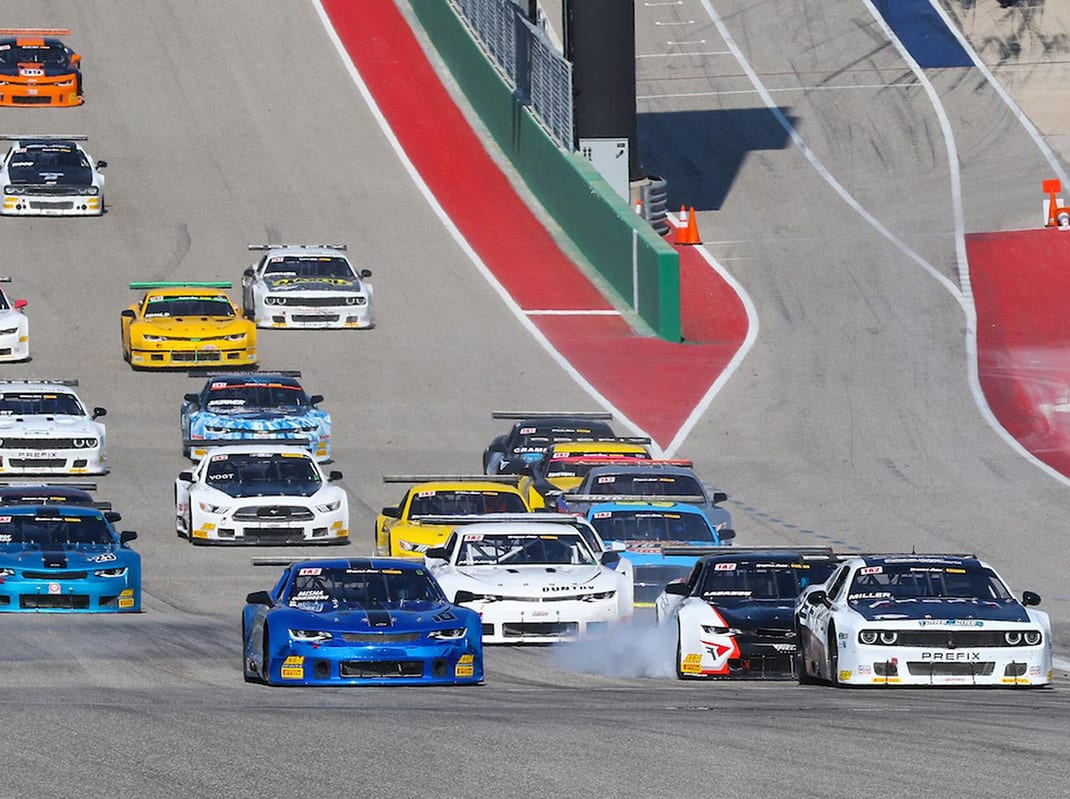According to Clagett, each class attracts a unique type of racer.
“Competitors see the Trans-Am class as the last sports car championship that is not relegated by some balance-of-power computer geek. If you’re a racer and you cherish the days of 850-horsepower machines without traction control and all of things that are so prevalent in today’s racing, that’s what Trans-Am racing is all about,” Clagett said. “That’s why you see the Boris Saids, Chris Dysons and Greg Picketts of the world. It’s a true racer’s formula.
“Having said that, the TA2 is not that. TA2 is a relegated formula where we have spec engines per se, we have a limited number of chassis builders and we have capped pricing on brakes, shocks and all kinds of things,” Clagett continued. “The formula has worked over what is now a 10-year period where we’ve kept the cars basically the same price with the exception of an inflation index.
“The beauty of that class is that it’s attracted some of the strongest and deepest fields in sports car racing today. You have what we call ‘the NASCAR kids,’ which are kids who are trying to get some road racing experience on their way to a NASCAR career. We get them. We get guys like Raphael Matos, who is an Indy 500 rookie of the year and a championship racer. He’s found a home in TA2. And we get guys like Mike Skeen, who is a very accomplished racer that came to the series and won a championship last year. As a result, the talent level across the 30- to 35-car fields is deep and there is really great racing.”
A typical weekend of Trans-Am racing also includes numerous production classes, none of which are specific to the Trans-Am cause.
“They are common formulas that other entities are using,” Clagett noted. “Our difference is that we’re not homologating cars out of existence every year or two and forcing competitors to buy new cars to meet the new specs. We are kind of the home for where those old homologations go to race. It gives cars an opportunity to be sold down to a competitor who wants to race it beyond its shelf-life that FIA or SRO creates for them.”
In addition, Trans-Am partners with the Sportscar Vintage Racing Ass’n for several of its bigger events.
“We are creating a wonderful motorsports experience on these weekends,” Clagett said. “It has Trans-Am, giving them the professional sports car racing element. We have historic and vintage cars for those who are looking for that. And this year, we are going to have the Formula 4 and Formula regional championships join a lot of our weekends, bringing a different demographic mix to the events in terms of audience.
“It’s kind of a motorsports celebration. Somebody who comes to Watkins Glen for the Trans-Am/SVRA weekend is going to be shocked to see an infield full of race cars. It’s one of the biggest events held at Watkins Glen.”
The auto industry’s recent focus on eye-popping horsepower numbers and iconic automobiles such as the Chevrolet Camaro, Ford Mustang and Dodge Charger has brought the Trans-Am Series full circle.
“You go back to 1966; Trans-Am and pony cars came into existence together. It was the Trans-Am Series that was used as the ‘race on Sunday, sell on Monday’ platform,” Clagett noted. “For us to have stayed in that same wheelhouse for 54 years and to have the industry comeback to once again building a platform for pony cars, or muscle cars, sure it’s been good for us.
“It hasn’t necessarily carried over to massive amounts of factory support of our racing, and that’s not to say we wanted that,” Clagett added. “We don’t want to have factory teams when it comes to Trans-Am and Trans-Am2. Those have a tendency to be flash-in-the pan programs and your independents get left behind. Then, when your factories leave, that’s when the independents have an opportunity for success.
“Our niche has been to keep Trans-Am non-dependent on the factories and give the privateers a place to race. That’s essentially what the Trans-Am Race Co. created in 2012 and it certainly seems to be working.”
